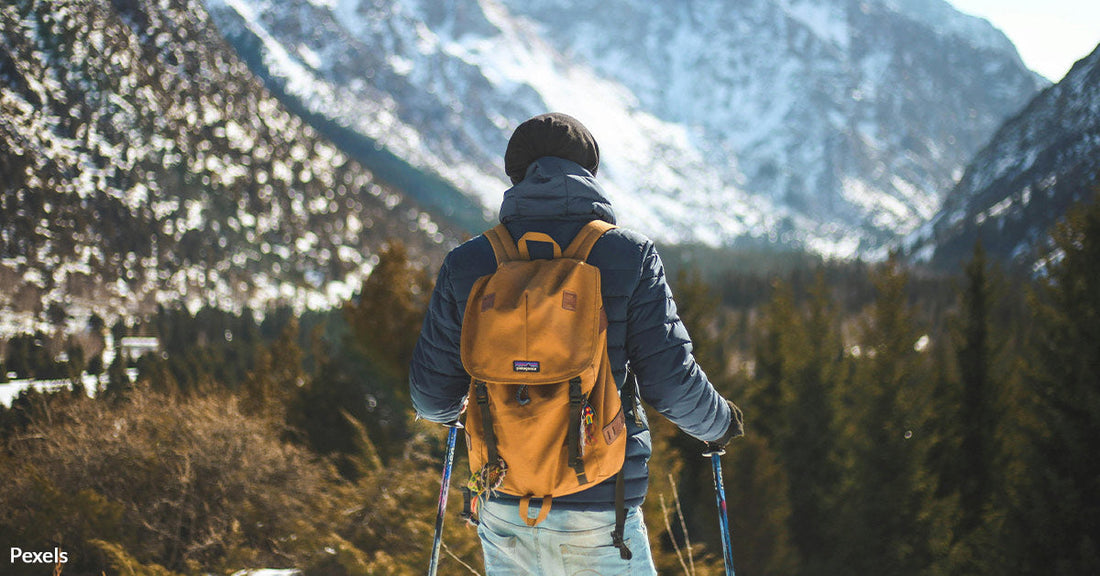7th Annual Holiday Toy & Book Event Help make the holidays brighter this year!
Hikers Vanish Without a Trace in National Parks as Search Efforts Fall Short
Matthew Russell
America’s national parks offer stunning landscapes and a chance to reconnect with nature. But for some, a trip into the wilderness turns into something more sinister: a disappearance with no clear answers.
Every year, the National Park Service (NPS) conducts thousands of search-and-rescue operations, yet some cases remain unresolved for decades. Understanding the risks and knowing what resources are available can mean the difference between survival and becoming another name on a missing persons list.

Photo: Pexels
The Scale of the Problem
Missing persons cases in national parks vary widely in circumstances. Some involve experienced hikers caught in sudden weather shifts. Others disappear under more mysterious conditions, leaving few clues behind. According to NewsNation, the NPS maintains an official list of those who have vanished, with some cases dating back over forty years. While the majority of people who get lost are found, some are never seen again.
One such case is that of Dennis Lloyd Martin, a six-year-old boy who vanished in 1969 while playing hide-and-seek with his family in Great Smoky Mountains National Park. Decades later, his disappearance remains one of the most well-known missing persons cases in the park’s history, as reported by WATE.

Photo: Pexels
Common Patterns in Disappearances
Many missing persons cases share eerie similarities. David Paulides, author of the “Missing 411” series, has identified patterns that recur across disappearances, including sudden changes in weather, search dogs failing to pick up a scent, and missing persons often being found in areas already thoroughly searched, Boston Herald reports.
A striking number of those who vanish are solo hikers. Experts emphasize that one of the most dangerous mistakes hikers make is failing to tell others their itinerary. Survival expert Jessie Krebs told NewsNation that it is critical to leave detailed plans with friends or family, including a route map and estimated return time before leaving on a hike.
Resources for Finding the Lost
The National Park Service has a dedicated Investigative Services Branch that handles missing persons cases, along with local law enforcement and volunteer search teams. Search-and-rescue (SAR) teams use a combination of helicopters, tracking dogs, and ground searchers to locate missing individuals. Some cases, however, turn into cold cases when no active leads remain.
For ongoing investigations, the NPS maintains a public list of missing persons, accessible through its website. The agency urges anyone with information to submit anonymous tips through its tip line. Additionally, hikers can increase their chances of being found by carrying a whistle, wearing bright clothing, and using a GPS beacon in case of emergency.

Photo: Pexels
The Impact of Budget Cuts
Despite the vital role played by park rangers and search teams, recent budget cuts have raised concerns about the future of these operations. The Department of Government Efficiency (DOGE) has implemented staff reductions at national parks, limiting the number of available personnel to respond to emergencies. According to NPR, these cuts have reduced ranger presence, making it harder to monitor visitor safety.
Fewer resources mean longer response times when someone goes missing. Some experts warn that as staffing shortages increase, national parks may struggle to maintain the same level of search-and-rescue effectiveness. This concern is echoed by affected rangers and visitors alike, who have noted slower emergency response times in parks like Zion and Grand Canyon, Texas Standard reports.

Photo: Pexels
Preventing Tragedy
While many of these disappearances remain mysteries, hikers can take precautions to stay safe. The NPS recommends always hiking with a partner, sticking to designated trails, and carrying essential survival gear. GPS signals can be unreliable in remote areas, so physical maps and compasses are crucial.
National parks offer some of the most breathtaking and remote landscapes in the country, but they also come with risks. By preparing properly, staying aware of surroundings, and utilizing available safety resources, visitors can reduce the chances of becoming another missing person statistic. For those who do disappear, dedicated search-and-rescue teams remain ready to help—but the best protection is prevention.
Click below and help us call on the National Parks Service to improves resources for locating missing people!

